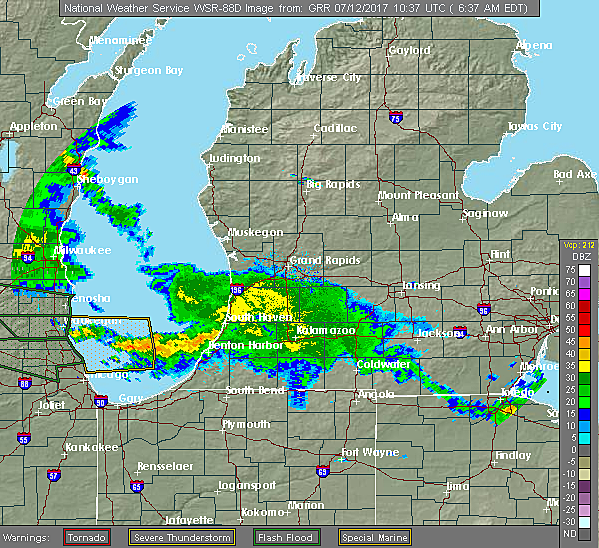

#BIG WEATHER RADAR UPDATE#
The remaining benefit pool with respect to enhanced radar coverage and scan update rate is about $36M yr −1. weather radar network, yields a benefit estimate of $207 million (M) yr −1 relative to no radar coverage at all. This model, applied to the current contiguous U.S. In combination, these statistical relationships form the basis of a cost model that can be differenced between radar network configurations to generate geospatial benefit density maps. Furthermore, nontornadic thunderstorm wind casualty rates are observed to be negatively correlated with better warning performance. Regression analyses on 22 years (1998–2019) of storm event and warning data show, likely for the first time, a clear dependence of nontornadic severe thunderstorm warning performance on radar coverage.

Modeled relative contributions of tornado, flash flood, and nontornadic thunderstorm wind in the CONUS to (top) mean annual cost, (middle) annual benefit provided by the current radar network, and (bottom) remaining annual benefit pool that would be given by perfect radar coverage and rapid-scan capability.Īn econometric geospatial benefit model for nontornadic thunderstorm wind casualty reduction is developed for meteorological radar network planning. Modeled mean annual nontornadic thunderstorm wind casualty rate density for the current weather radar network.ĭifference in modeled mean annual nontornadic thunderstorm wind casualty cost density between the perfect radar coverage with rapid-scan case and the baseline (current radar network) case. Mean annual nontornadic thunderstorm wind occurrence rate density. The median lead time is 1200 s (20 min), regardless of whether negative lead times are included. Histogram of SVR warning lead times for nontornadic thunderstorm wind events. White indicates areas with no SVR warning issued during the respective period. Historical SVR warning false alarm ratio (top) from to, in the county-based warning era, and (bottom) from to, in the storm-based warning era. Mean annual nontornadic thunderstorm wind casualty density. Dashed lines correspond to a rapid-scanning radar case. Plots of (top left) SVR probability of detection vs FVO, (top right) SVR probability of detection vs CHR, (bottom left) SVR false alarm ratio vs FVO, and (bottom right) SVR false alarm ratio vs CHR. WSR-88D (squares) and TDWR (crosses) locations in the CONUS. Computational model components are shown as orange ovals. Input data are denoted by gray rectangles, intermediate data products are shown by green rectangles, and monetized cost output is shown by a blue rectangle. (top) Development and (bottom) usage block diagrams of the radar network severe thunderstorm casualty cost model. On weather maps, these readings are represented as a blue “H” for high pressure or a red “L” for low pressure.Number of casualties in the United States from tornadoes, flash floods, nontornadic thunderstorm winds, hail, and lightning. So, very moist air in the atmosphere can lead to low atmospheric pressure and very dry air can lead to high atmospheric pressure.Ītmospheric pressure is measured with an instrument on the ground called a barometer, and these measurements are collected at many locations across the U.S. This is because water molecules are lighter than molecules of nitrogen or oxygen-the most abundant gases in our atmosphere. Very moist air that has lots of water vapor is actually lighter and less dense than dry air. Water vapor in the atmosphere can also change the atmospheric pressure.

In cold air the gas molecules slow down, causing low atmospheric pressure. When the air is warm, gas molecules move around quickly in the air pushing out on the area around them. Warm air can also cause the atmospheric pressure to rise. When you're at a low elevation, you experience high atmospheric pressure because more of the atmosphere is pushing down on you.


 0 kommentar(er)
0 kommentar(er)
